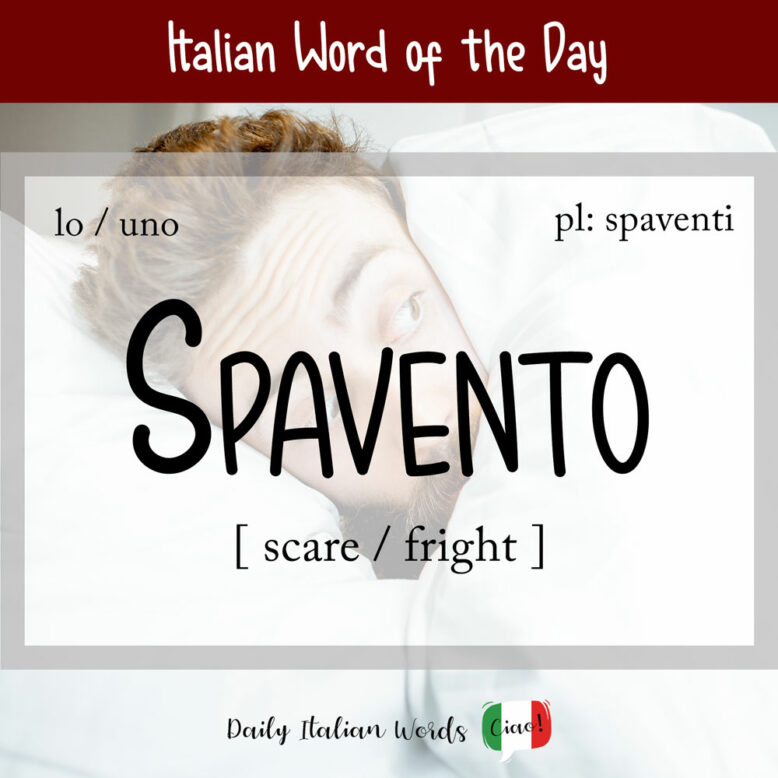The noun spavento (masculine, plural: spaventi) in Italian can translate in numerous ways including scare, fright, dread, terror or fear. It derives from the verb spaventare which means to frighten or to scare.

It often appears in the company of the following verbs:
- fare spavento (a qualcuno) = to scare (somebody)
- mettere spavento (a qualcuno) = to give (somebody) a fright
- incutere spavento (a qualcuno) = to give (somebody) a fright
- prendersi uno spavento = to have a scare
- tremare dallo spavento = to shake with fear
- morire dallo spavento = to die of fear
- rimanere agghiacciato dallo spavento = lit: to be chilled by the fright
- rimanere pietrificato dallo spavento = lit: to be petrified by the fright
La mia mano tremava dallo spavento.
My hand was shaking with fright.

Quite often you’ll also see it used in the exclamation Che spavento! meaning What a fright!
Spavento may also be used in a hyperbolic sense to describe things that leave either an extremely nice or terrible impression, especially when it appears in the expression da far spavento (lit: to make you frightened). For example:
- bello / bella da far spavento = incredibly beautiful
- brutto / brutta da far spavento = frightfully ugly
La sua ignoranza fa spavento.
His ignorance is frightening.
Some related terms besides spaventare include:
- spaventarsi = to get scared, to scare oneself
- spaventoso = frightful, horrendous
- spaventosamente = frighteningly
- spaventato = frightened, scared
- spaventapasseri = scarecrow
Heather Broster is a graduate with honours in linguistics from the University of Western Ontario. She is an aspiring polyglot, proficient in English and Italian, as well as Japanese, Welsh, and French to varying degrees of fluency. Originally from Toronto, Heather has resided in various countries, notably Italy for a period of six years. Her primary focus lies in the fields of language acquisition, education, and bilingual instruction.


